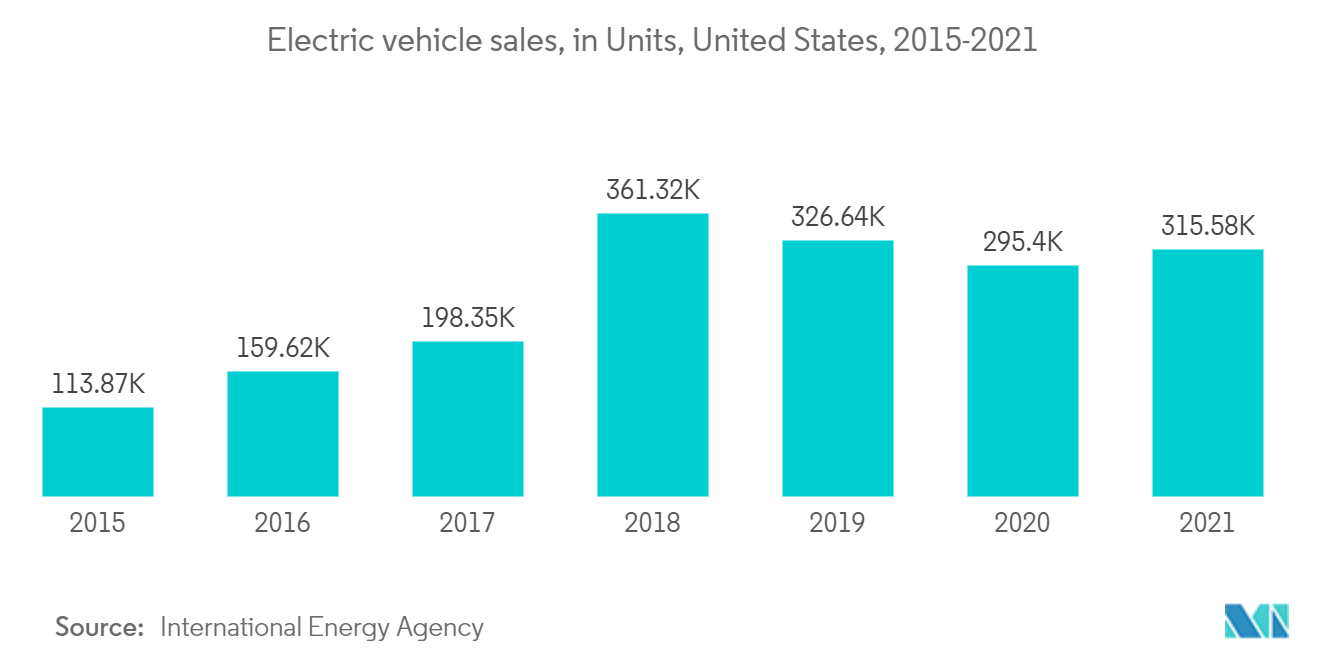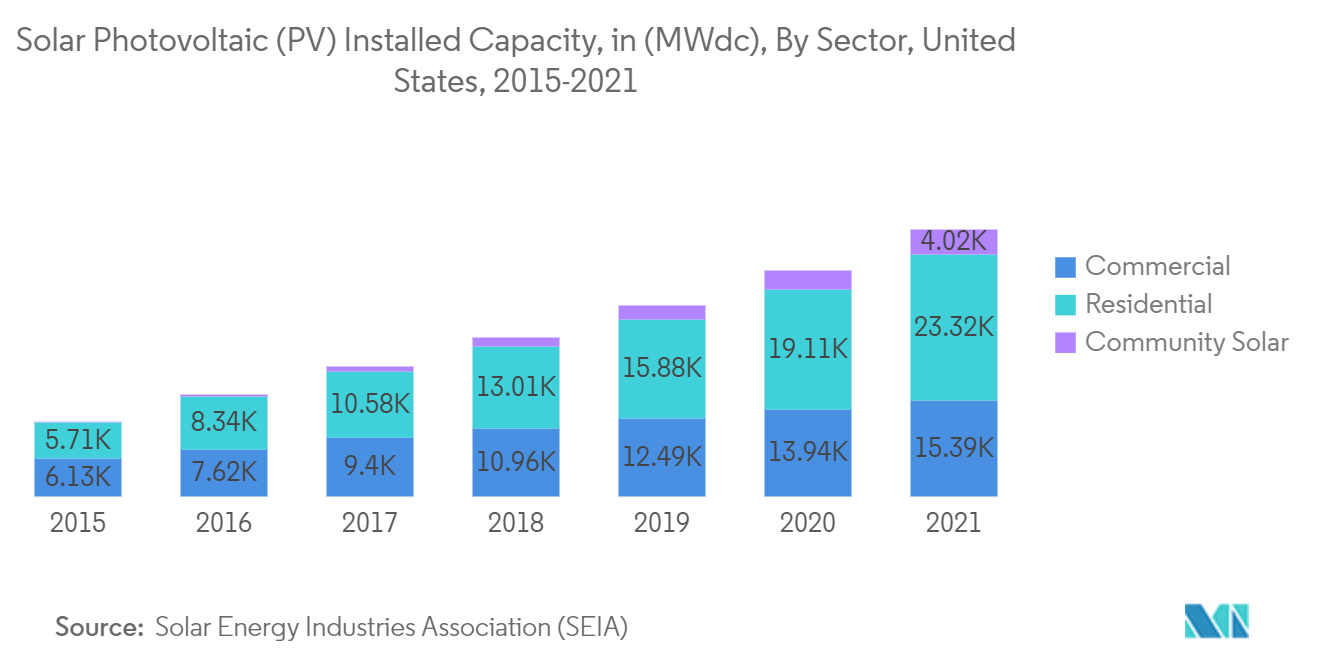Market Trends of United States Battery Cell Industry
This section covers the major market trends shaping the US Battery Cell Market according to our research experts:
Automobile Batteries Segment to Dominate the Market
- The United States is one of the largest electric vehicle (EV) markets in the world. The EV manufacturers in the country are primarily catering to the demand for EVs arising domestically. Hence, growth in EV sales in the country is driving the EV manufacturing sector, in turn, supporting both prismatic and cylindrical battery market growth.
- As of 2021, the number of electric vehicle sales in the United States is 3,15576, an increase of 6.8% over 2,95,399 in 2020.
- The California Energy Commission (CEC) and the California Air Resources Board (CARB) report that EV sales in the United States reached a record number during Q1 2022, with over 208,000 units delivered.
- EV manufacturers in the United States are undertaking further initiatives to cater to the rising demand in the country. Thirteen new battery cell Giga factories are expected to come online in the United States by 2025. All of these Giga factories are being developed by various automobile manufacturers like Ford Motor Company, and General Motors Company, Tesla Inc., among others to support their electric vehicle manufacturing and sales.
- To encourage the sale of EVs, many states in the United States provide attractive incentives to consumers, such as free parking, low or no registration fees, reductions in tolls, and charging stations around the country.
- The state of California, for instance, offers discounts on electric cars with zero emissions and plug-in hybrid electric vehicles (PHEVS). Low-income families can receive an additional USD 2,000 as discount for buying EVs. In addition, New Jersey and Washington exempt electric vehicles from vehicle sales taxes. Similarly, Louisiana and Maryland offer tax credits of up to USD 2,500 and USD 3,000 for each vehicle.
- In October 2021, According to Toyota, the company is going to invest USD 3.4 billion in automotive batteries in the U.S. through 2030, primarily to develop and localize automotive battery production.
- In the automotive sector, the United States is indisputably one of the largest economies in the world. Increasingly viable electric vehicle technology is leading to an electric vehicle revolution in the United States, which is directly linked to the country's electric vehicle battery market. These factors are expected to drive the aumobile battery cell market in the country during the forecast period.

Rising Renewable Energy Generation Leading to Increasing Adoption Battery Energy Storage Systems to Drive the Market
- With increasing investments in renewable energy infrastructure, the United States has seen significant changes in recent years, especially in the residential and commercial sectors.
- The adoption of solar PV systems by the residential, Commercial & Industrial (C&I) sectors is expected to be a major driver in the market studied. One of the major factors driving the adoption of rooftop solar is government initiatives, such as net metering, which is expected to drive the demand for energy storage systems in the future.
- According to the Solar Energy Industries Association of the United States, During Q2 2022, the U.S. installed 4.6 gigawatts (GWdc) of solar PV capacity, reaching 130.9 GWdc of total installed capacity, enough to power 23 million American homes.
- A total of 39% of the new electricity generating capacity added in the U.S. during the first half of 2021 came from solar energy.
- Over the last decade, solar installation costs have decreased by more than 60%, leading the industry to expand into new markets and deploy thousands of systems. In 2010, the average residential system cost USD 40,000, but now it costs between USD 20,000 and USD 30,000, and utility-scale systems cost from USD 16 to USD 35 per MWh, which is competitive with all other forms of electricity generation.
- In the United States, battery-based energy storage projects are currently being developed, which include several battery technologies. Between 2021 and 2024, around 14.5 gigawatts (GW) of battery storage capacity is expected to be online. Around 9.2 GW of this storage capacity is going to be co-located with solar, 1.3 GW with wind energy, and the remaining 4 GW in a stand-alone capacity.
- Therefore, increasing investments in renewable energy and decreasing solar installation costs are expected to drive market growth.

